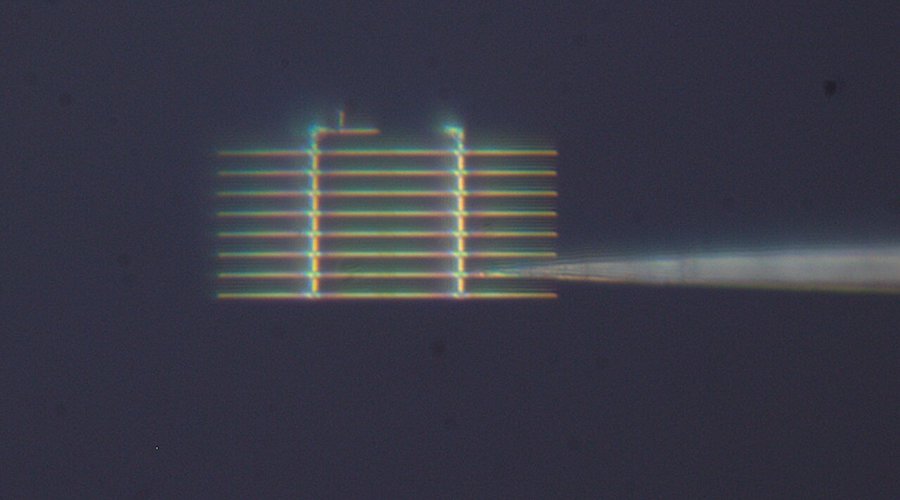
A tiny, diamond-tin-filled device developed at the Massachusetts Institute of Technology and the University of Cambridge could allow the quick, efficient flow of quantum information over large distances.
In a paper published in the journal Nature Photonics, the scientists explain that the key to the device is a “microchiplet” made of diamond in which some of the diamond’s carbon atoms are replaced with atoms of tin. The team’s experiments indicate that the device, consisting of waveguides for the light to carry the quantum information, solves a paradox that has stymied the arrival of large, scalable quantum networks.
Quantum information in the form of quantum bits, or qubits, is easily disrupted by environmental noise, like magnetic fields, that destroys the information. So on one hand, it’s desirable to have qubits that don’t interact strongly with the environment. On the other hand, however, those qubits need to strongly interact with the light, or photons, key to carrying the information over distances.
The MIT and Cambridge researchers allow both by co-integrating two different kinds of qubits that work in tandem to save and transmit information. Further, the team reports high efficiencies in the transfer of that information.
“This is a critical step as it demonstrates the feasibility of integrating electronic and nuclear qubits in a microchiplet. This integration addresses the need to preserve quantum information over long distances while maintaining strong interaction with photons,” Dirk Englund, who led the research at MIT, said in a media statement. “This was possible through the combination of the strengths of the University of Cambridge and MIT teams.”
A computer bit can be thought of as anything with two different physical states, such as “on” and “off,” to represent zero and one. In the strange ultra-small world of quantum mechanics, a qubit “has the extra property that instead of being in just one of these two states, it can be in a superposition of the two states. So it can be in both of those states at the same time,” Jesús Arjona Martínez, co-author of the study, said.
Multiple qubits that are entangled, or correlated with each other, can share much more information than the bits associated with conventional computing. Hence the potential power of quantum computers.
Englund and his team explained that there are many kinds of qubits, but two common types are based on spin, or the rotation of an electron or a nucleus (left to right, or right to left). The new device involves both electronic and nuclear qubits.
A spinning electron, or electronic qubit, is very good at interacting with the environment, while the spinning nucleus of an atom, or nuclear qubit, is not.
“We’ve combined a qubit that is well known for interacting easily with light with a qubit that is well known for being very isolated, and thus preserving information for a long time. By combining these two, we think we can get the best of both worlds,” Arjona Martínez said.
The way it works is that the electron [electronic qubit] whizzing along in the diamond can get stuck at the tin defect and this electronic qubit can then transfer its information to the spinning tin nucleus, the nuclear qubit.
“The analogy I like to use is the solar system,” Isaac Harris, co-author of the paper, said. “You have the sun in the middle, that’s the tin nucleus, and then you have the earth going around it, and that’s the electron. We can choose to store the information in the direction of the earth’s rotation, that’s our electronic qubit. Or we can store the information in the direction of the sun, which rotates around its own axis. That’s the nuclear qubit.”
In general, then, light carries information through an optical fibre to the new device, which includes a stack of several tiny diamond waveguides that are each about 1,000 times smaller than a human hair. Several devices could then act as the nodes that control the flow of information in the quantum internet.
The work described in this study involved experiments with one device.
“Eventually, however, there could be hundreds or thousands of these on a microchip,” Arjona Martínez said.
Harris noted that his theoretical work had predicted a strong interaction between the tin nucleus and the incoming electronic qubit. “It was ten times larger than we expected it to be, so I thought the calculation was probably wrong. Then the Cambridge team came along and measured it, and it was neat to see that the prediction was confirmed by the experiment.”
Comments
Parmionova
Congratulations to scientists for this micro-ships technology invention.